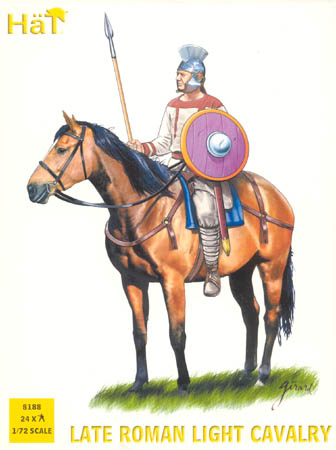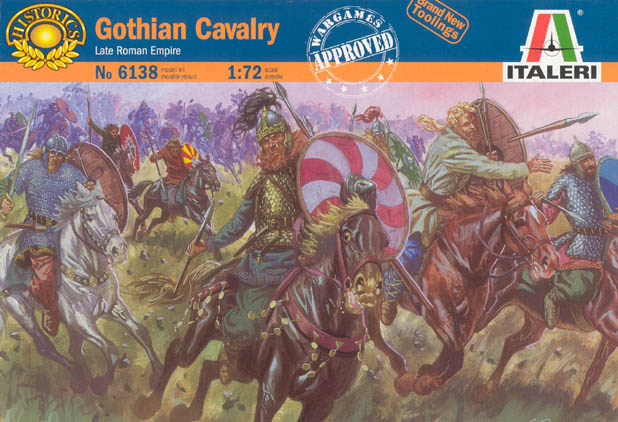I recently finished this tome which could be considered the companion piece for the author's other title reviewed here, The Fall of the Roman Empire.
This book focuses on the reasons why the movements of barbarians happened in the first place and how these movements of large groups affected the status quo of Europe.
The author uses modern theories of migration as his starting point and then using them as a framework, interprets existing literary and archaeological evidence to expound his own theories. He also describes previous academic historical interpretations of this period and critiques them in light of his own theory. While not dismissing these theories completely out of hand, he offers a more nuanced and seemingly realistic interpretation of the old Volkerwanderung story.
He is more of the opinion that the pull of economic factors were more responsible for the attraction of barbarian peoples to the Empire, rather than the push factors of political upheaval such as occurred with the advent of the Huns. As happens today, the lure of the developed world is the primary factor for migration, especially from the under-developed world. Heather argues that similar factors were at play then. The tribes along the border were integrated into the Roman economic system by trading with the garrisons, providing auxiliary troops in return for payment as well as being paid subsidies by the Empire in return for peaceful relations in a kind of divide and rule policy. Those tribes outside this periphery, while sometimes supplying raw materials like amber and iron or controlling the trade routes of these commodities, could see that it was much more economically rewarding to be in the inner circle receiving the subsidies and directly trading with the Empire. So, periodically, these groups would raid the established Roman allies and even the Empire itself.
In their previous entities, Germanic tribes weren't large enough to do more than raid, so the next step in political development was for these tribes to organise enough muscle to be able to take over the position of most favoured nation status from those who already had it. Previous tribal groupings involved retinues of a couple of hundred warriors who followed one leader, supported by the rest of the lower status members of the tribe who grew the crops and farmed the animals. Even the amalgamation of these warbands under an overlord still didn't really offer enough muscle. The truly innovative and new behaviour most clearly seen in the rise of the Goths, was the wholesale recruitment of all males in the tribe to join in the warband. Not only did the nobles and their freemen fight, but the next layer down or the freedmen or lower status food producers were required to fight as well. This meant that in order for the whole community to survive the loss of manpower, everyone would in turn have to follow, transplanting their whole community wherever the warbands conquered. As farming technology and techniques meant that these tribal communities had to move every generation or so once the soil had been exhausted, it wasn't such an upheaval as might be expected otherwise. Once the precedence had been set, then the likelihood of further moves increased.
Rather than ready-made nations on the move, as the 19th and 20th century nationalist interpretations would have us believe, these were groupings of peoples (not necessarily even ethnically related) who banded together to extract the wealth of the Roman Empire for their own benefit. Once they'd displaced those on the fringes of the Empire, the next step was to demand access to the Empire for themselves to become integral parts of it. The Goth, Vandals, Suevi, Alans ands Burgundians all were attempting to get a slice of the action rather than to actively destroy the Empire. The survival of Roman practices and latinate languages especially in western Europe point to the adaptation of life to the new rulers (or the other way around!). In Britain, the large number of smaller groups of Germanic tribes who appeared over a longer period indicate the lack of resistance they faced and the logistical difficulties of sea-borne travel. As a result, more smaller kingdoms appeared than were usual on the Continent. Also, as there were more wealthier, higher status members of these bands compared to the Continental groups, there was more seizure of British estates than in Europe which allowed the invaders' language to become the dominant tongue.
The book follows all the main migrations right up until the year 1000 including the spread of the Slavs and Vikings as well. All were related and all had major impacts on the political landscape of Europe, laying the foundations of the states that in turn became the nations of Europe as we know them today.
I found it a heavy read, which took me a long time to plough through, but it was highly rewarding in the end. Not your usual narrative history, but provides a lot of food for thought, and clearly makes the case for the Dark Ages just being a continuum between the Roman Empire and the Medieval world. Fascinating stuff.


















































